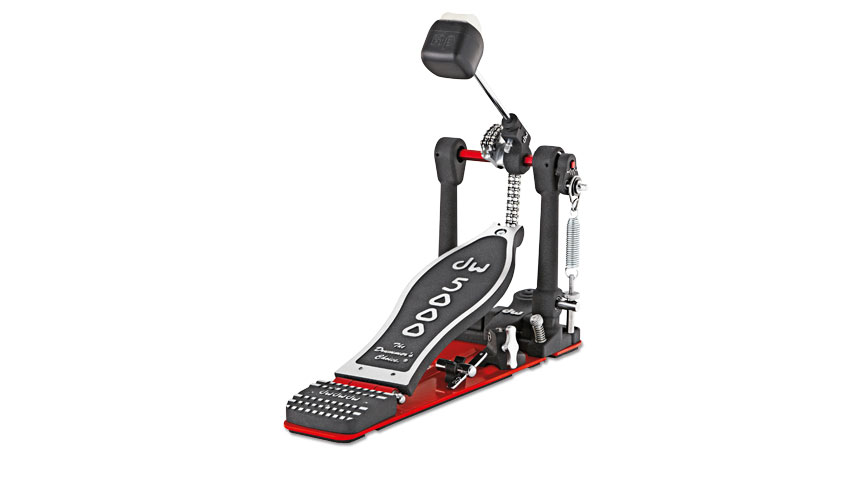MusicRadar Verdict
The 5000's subtle design improvements make a surprising difference to the pedal motion, giving it improved speed and feel.
Pros
- +
Smart design enhancements. Attractive new finish. Plays faster and harder.
Cons
- -
Not a lot.
MusicRadar's got your back
Back in the early '70s, Drum Workshop purchased the tooling, moulds and dies from the Camco drum company and reintroduced the popular nylon strap bass drum pedal, retaining the 5000 model number and awarding it a DW badge.
The 'Camco' brand name itself was sold, eventually finding its way to being under the ownership of Tama. The reintroduction of the 5000 pedal gave the fledging DW a solid foundation and many years later, after several design enhancements (notably with a chain drive), it became an industry standard.
Build
At just a glance it seems little has changed from the previous incarnation of this 'Accelerator' model. The most noticeable and immediate physical difference being the finish of the bearing/pedal shaft itself - this now has a red anodised finish instead of the plain alloy.
DW has remained faithful to the colour scheme overall with the red-painted base plate and black powder coating beater/ bearing posts.
"Lifting up the pedal for a closer inspection reveals the underside of the hefty steel base plate now has a rubberised pad following the shape of the actual plate"
Also retained are features such as the ever-handy drum key (located in its clip attached to the base plate), the conveniently placed wingnut for the pedal clamp, pointed 'DW' embossed spikes and the foam insert into the pedal spring for a quieter operation.
So, what's new? Well, lifting up the pedal for a closer inspection reveals the underside of the hefty steel base plate now has a rubberised pad following the shape of the actual plate. This has a criss-cross pattern to help grip most surfaces, rather than the Velcro-like strips of the previous model.
Those strips were brilliant at anchoring the kick onto a carpeted surface but turned any last-minute bass drum repositioning into a palaver with the base plate a bit too lovingly attached!
The foot of the pedal clamp itself has been redesigned with three individual rubberised pads which are attached to individual rounded shafts giving 360° movement. This 'Tri-Pivot' toe clamp perfectly follows the shape or contours of an acoustic bass drum rim while also being suitable for a flat plate kick bracket found on many electronic kits.
The lower fixing is now an ingenious floating mechanism which allows the lower part of the spring to move with the pedal. This rocking motion is said to speed up the pedal and make the action smoother.
Hands On
With the new Tri-Pivot system, clamping the pedal to the bass drum rim is a breeze - applying its firm grip while seemingly centering itself in position. The subtle additions appear to give the pedal a 'pendulum' type motion which actually rocks for a good while longer than the previous model.
With the pedal's adjustable chain drive left 'as is' from the factory, the unit is much quicker and has the ability to fire rapid Bonham-esque style wallops with little effort.
“Every one of them said yes without hesitation": Hank Marvin and Roger Taylor have just remade a '60s classic for charity
Do you know where your money goes when you buy a gig ticket? A new report breaks it down
“Every note counts and fits perfectly”: Kirk Hammett names his best Metallica solo – and no, it’s not One or Master Of Puppets










